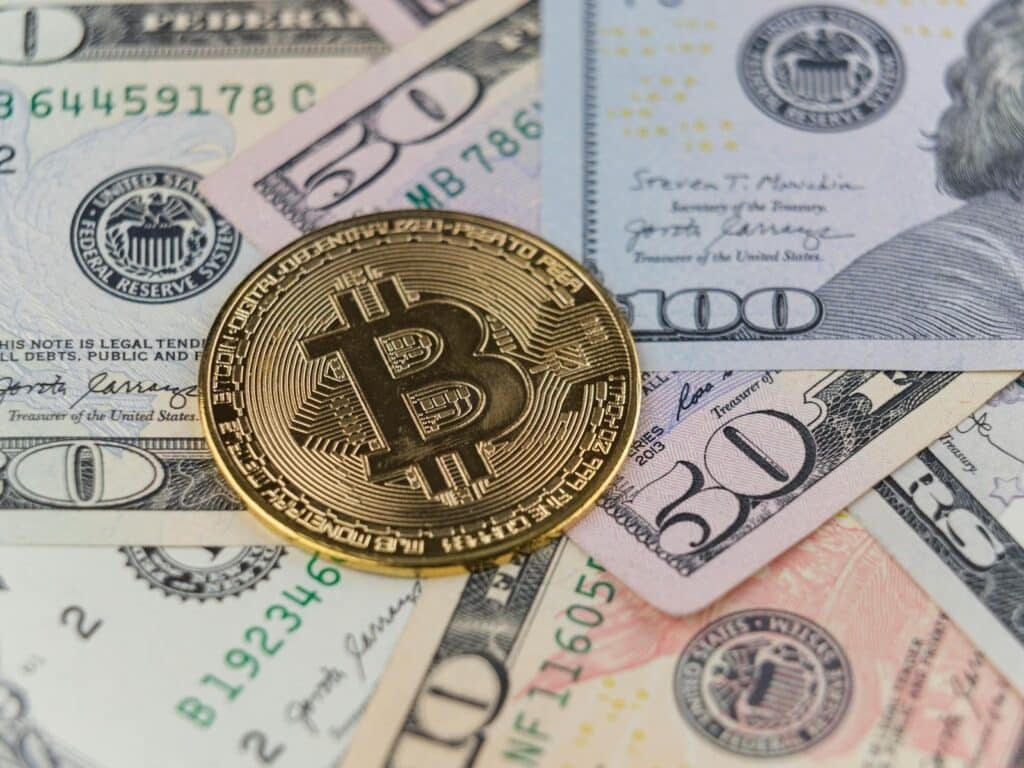Yes, you can pay utility bills with crypto, but only in certain countries and usually through third-party platforms. Services like BitPay, Spritz, and Zypto Pay are leading the way, enabling users to pay for electricity, gas, water, and more using Bitcoin, Ethereum, and stablecoins like USDC.
While CoinsBee doesn’t yet offer direct bill payments, it allows you to buy gift cards with crypto, offering a practical bridge between your digital wallet and everyday expenses.
⎯
In a world where digital money is progressing from niche curiosity to financial mainstay, a natural question arises: can you pay utility bills with crypto?
For many, this shifts the idea of Bitcoin and Ethereum from speculative assets to everyday workhorses of commerce.
At CoinsBee, we’re already helping users convert digital currencies into usable value by allowing them to buy gift cards with crypto. The next frontier is using them directly to settle bills, such as electricity or gas.
Below, we examine our current position, what’s possible, and where the future may lead.
Why Paying Utility Bills with Crypto Is Becoming Possible
Several technology and market developments are converging to enable crypto bill payments:
- On- and Off-Ramp Services: Platforms now enable crypto to be converted to fiat quickly (or processes that mask the conversion) so that the utility provider receives a regular fiat transfer while the user pays in crypto on the front end;
- Third-Party Bill-Pay Aggregators: Services like BitPay provide a “Bill Pay” infrastructure, allowing users to pay various invoices (including utilities) with LTC, USDT, and other top cryptos;
- Web3 Finance Tools and Stablecoin Rails: Apps like Spritz let users pay utility bills directly from crypto wallets using stablecoins (e.g., USDC), without needing to off-ramp to bank accounts;
- Regional Pilots and Utility-Level Adoption: In select markets, utility providers are experimenting with accepting crypto payments or permitting payment partners to handle the crypto-to-fiat bridging.
These innovations mean that, technically, you can now, in certain markets, pay your electricity bills with Bitcoin or pay gas bills with crypto via intermediaries, even if your utility provider doesn’t directly accept crypto.
Countries and Platforms Supporting Crypto Bill Payments
The landscape is fragmented, but pockets of adoption are emerging:
BitPay Bill Pay (United States, Canada, select EU countries, and the UK)
Supports paying a wide range of bills, including utilities, mortgages, and credit cards, using popular digital assets such as Bitcoin, Ethereum, and stablecoins.
Zypto Pay (Europe, Middle East, and Asia)
Allows users to pay utility bills, credit cards, insurance premiums, and more using crypto, with “pay utility bills” as one of its supported use cases.
It is currently expanding its coverage across countries such as Germany, the United Arab Emirates, and Singapore.
Spritz (US-centric but Expanding to Canada, the UK, and the Philippines)
Lets users connect crypto wallets and settle over 6,000 bills, including electricity, water, gas, and telecom, with stablecoins such as USDC or USDT.
Regional Bills Integration (Australia, Brazil, South Africa, and India)
In several countries, local fintech and crypto startups are collaborating with payment networks such as BPAY in Australia, PicPay in Brazil, and Paytm in India to integrate crypto billing options or third-party gateways for essential services.
Cryptocurrency Utility Pilots (Romania, Japan, the Netherlands, and Parts of the US)
A few forward-looking utilities, such as Eva Energy in Romania and small-scale energy cooperatives in Japan and the Netherlands, have piloted accepting direct crypto payments (or via partners) for water, electricity, and gas.
In the US, some cities, such as Chandler, Arizona, have also tested crypto-based water bill payments.
It’s essential to check your local market, as this is not yet available in many countries. Still, where supported, these platforms bridge the gap between your crypto wallet and your utility provider.

(Engin Akyurt/Pexels)
Advantages of Using Crypto for Everyday Expenses
Using crypto for everyday expenses offers multiple compelling benefits:
1. Reduced Friction for Crypto Holders
When you already hold crypto, being able to settle everyday payments (utilities, subscriptions, etc.) without converting to fiat first increases utility and reduces transactional overhead.
2. Speed and Accessibility Across Borders
Especially useful in regions with limited banking infrastructure or for expatriates paying utility bills abroad, crypto offers a global payment rail.
3. Utility of Stablecoins
Paying with stable digital assets (e.g., USDC, USDT) mitigates volatility risk while still enjoying the benefits of crypto-native flows.
4. Privacy and Control
Some users prefer fewer intermediaries. Crypto-based payments can reduce reliance on conventional banking rails and may offer enhanced privacy (though always subject to regulation and compliance).
5. Seamless Everyday Payments with Crypto
Enabling everyday payments with crypto (bills, groceries, services) helps integrate digital assets into the fabric of daily life, making crypto less speculative and more functional.
6. Synergy with Platforms Like CoinsBee
While CoinsBee does not (currently) facilitate direct utility bill payments, it empowers users to buy gift cards with crypto, which can sometimes be used to offset or re-route costs (e.g., a retailer card you use for energy services).
Challenges and Limitations You Should Know About
There are several obstacles to the broader adoption of paying utility bills with crypto:
- Regulatory and Compliance Barriers: Utilities are typically heavily regulated. Introducing crypto payments may trigger legal, tax, or financial regulatory compliance complexities;
- Volatility Risk: Unless using stablecoins, price fluctuations between the moment of payment and settlement can expose providers or users to risk;
- Liquidity and Settlement Mechanics: The infrastructure for bridging crypto payments into fiat in real time is still maturing. Liquidity demands and conversion costs need to be managed;
- Limited Regional Availability: Many markets don’t support it yet. Interoperability, banking relationships, or licensing may block adoption;
- Fees, Spreads, and Hidden Costs: Conversion and network fees may make it less attractive compared to traditional bank transfers or direct debit;
- Utility Provider Inertia: Many legacy systems are not geared to accept crypto—integration, training, and risk policies slow adoption;
- User Experience Complexity: Wallet errors, network congestion, or incorrect addresses are real risks when dealing with crypto payments.
Due to these limitations, paying bills with crypto remains a niche option in most places, though viable in some. Users must weigh the tradeoffs.
The Future of Utility Bill Payments with Crypto
Looking ahead, this space is likely to evolve in the following ways:
- Greater Adoption via Stablecoin Rails: Stablecoins are likely to be the dominant medium, offering price stability while retaining crypto-native advantages;
- Embedded Crypto-Pay Features at Utilities: Utilities may increasingly partner with crypto payment providers to embed direct “Pay with Crypto” options in billing portals;
- Regulatory Frameworks Catching Up: As governments become more comfortable with digital assets, clearer regulation may unlock scaled adoption, especially for utilities and essential services;
- Interoperable Standards and APIs: Industry standards may emerge to simplify integration across utilities, billing systems, and crypto wallets, making onboarding easier;
- Expansion of Platforms and Aggregation Services: Just as CoinsBee enables users to spend crypto to buy gift cards, new platforms will aim to bundle crypto bill payments, including utilities, insurance, telecom, etc., into unified dashboards;
- Hybrid Models: In many markets, the model may remain hybrid—you’ll pay via crypto to an intermediary who handles fiat settlement with the actual utility. Over time, layers may flatten;
- Consumer Behavior Shifts: As more people become comfortable holding and spending crypto, demand for everyday use cases (including utilities) will rise, pushing market demand.
In short, paying your utility bills with digital currencies is no longer a distant concept—it’s a growing reality.
While CoinsBee already makes it easy to buy gift cards with crypto, the same simplicity may soon apply to how you keep your lights on and your home running.
Final Word
In summary, yes, in select markets and through specific intermediaries, it is already possible to pay utility bills with crypto.
However, adoption remains in early stages, constrained by regulation, infrastructure, and market inertia. As technology, regulation, and user experience mature, crypto bill payments may become commonplace.
At CoinsBee, we are deeply committed to making digital assets accessible, helping users buy gift cards with crypto every day.
While we do not yet directly support utility bills, our continued mission is to bridge the gap between crypto and the real world, whether it’s your streaming subscriptions, mobile top-ups, or eventually, your electricity or gas bills.
Watch this space—the future of everyday payments with crypto is just beginning.




